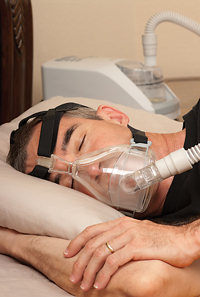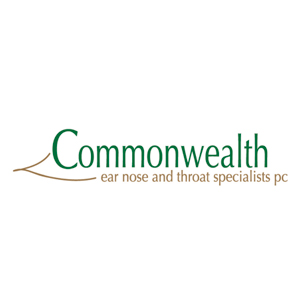
Obstructive sleep apnea affects up to seven percent of men, yet seventy to eighty percent of people with sleep apnea remain undiagnosed. If sleep apnea is left untreated, over time the risk of high blood pressure, heart attack, stroke, heart failure, and diabetes increases. Think of it as running your body on a bad engine every night.
Obstructive sleep apnea involves a collapse of the upper airway while sleeping. The causes of this collapse can include extra tissue in the back of the throat such as tonsils or soft palate/uvula, or a jaw that is more posterior (sometimes called a weak chin) with subsequent collapse of the tongue against the posterior airway. When the closure of the airway occurs while sleeping, it is as if you’re being choked. This causes a fight-or-flight response and adrenalin is secreted. When this occurs repeatedly, it wreaks havoc on the heart and lungs.
Signs of sleep apnea include loud snoring, breathing-cessation during sleep, abrupt awakenings with shortness of breath, daytime sleepiness, and awakening with a dry mouth or sore throat. Side effects might be memory problems, poor concentration, morning headaches, depression or moodiness, and decreased interest in sex.
Primary among the risk factors? Being male. Plus, advanced age; being African American if under thirty-five; smoking; nasal congestion; narrow airway (possibly inherited); excess weight; beer, liquor, sedative, or tranquilizer use; and a large neck circumference. It’s worth noting, however, that a lean person can have sleep apnea simply due to anatomy.
To determine if you should consider further testing for sleep apnea, you might consult the Epworth Sleepiness Scale online (epworthsleepinessscale.com). There are two tests available to diagnose sleep apnea. The first, nocturnal polysomnography, involves staying overnight in a sleep clinic and monitoring for heart, lung, and brain activity, breathing patterns, arm and leg movements, and blood oxygen levels. The other is the take-home sleep test (available at many physicians’ offices, including primary care physicians and those who specialize in the treatment of sleep apnea). This test monitors your heart rate, blood oxygen level, airflow, and breathing patterns.
There are a multitude of options for treatment of obstructive sleep apnea, including the use of apnea-prevention machines, oral appliances, and surgery. Machines, called CPAPs (for continuous positive airway pressure) or BiPAPs (bi-level positive airway pressure), provide airflow while sleeping to keep the patient’s airways open. Some of my patients are extremely pleased with the results from their CPAP or BiPAP machine. They feel the benefits every morning when they awake more rested, and ready to conquer the world. Anywhere from forty to sixty percent of patients who use the machine tolerate it and use it routinely. If used consistently, patients absolutely decrease their risk of heart disease, high blood pressure, and stroke.
Over the past decade, oral appliances have played a larger role in the treatment of sleep apnea. If one opts for the oral appliance, a sleep study needs to be done with the oral appliance in place to ensure that the sleep apnea has resolved. Adjustments can be made to the oral appliance to benefit certain patients with favorable anatomy who use the oral appliance. Oral appliances can be used in conjunction with CPAP or BiPAP machines as well.
Another treatment for sleep apnea is surgery. When a patient’s anatomy indicates surgery, results can be very favorable and some apnea can be cured. There are other patients who may not be the most favorable anatomically for surgery; however, they could be candidates for surgery to either decrease the severity of their sleep apnea or to help tolerate the CPAP or BiPAP machine. The nasal passages of these patients may be occluded from swollen tissue or a crooked septum (the wall separating the nostrils). Opening this up allows patients to tolerate the mask that is blowing air to keep the airway open. If one has surgery for sleep apnea, a repeat sleep study three months after surgery is crucial to ensure that the sleep apnea has resolved.
If you – or someone you sleep with – has sleep apnea, all options for treatment should be considered. Schedule a visit with a sleep medicine physician, an otolaryngology head and neck surgeon (ENT), and/or a dentist or oral surgeon. Consider all of the available options for the treatment of sleep apnea and determine which is the best. If one treatment doesn’t work, don’t give up. Instead, look into another approach.
The worse approach for sleep apnea sufferers is to do nothing. At least consider a machine to help re-energize and gain the stamina to start a regular exercise program. A lot of damage can be done over the course of a year if one is stopping breathing (being choked) twenty to more than one hundred times per hour while sleeping. About a third of our lifetimes are spent sleeping after all. Let’s do what we can to make the most of this time.




